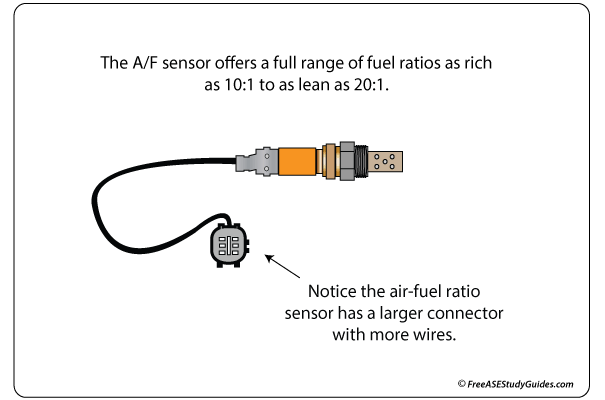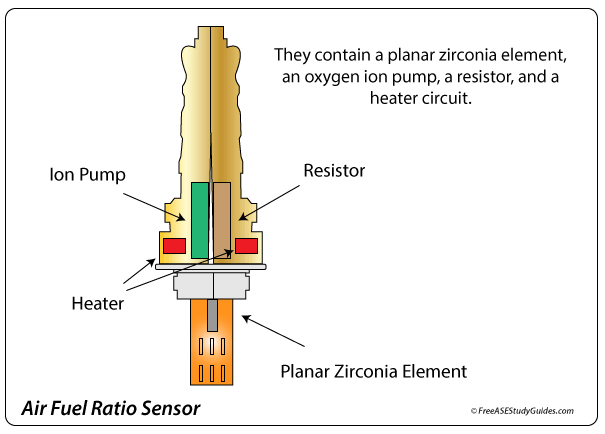A/F Sensor: Air Fuel Ratio Sensor
An A/F sensor or air-fuel ratio sensor is different than a conventional O2 sensor. It's considered a wide or broad-range oxygen sensor able to operate under a wide range of operating conditions.

It provides more accurate monitoring of oxygen content over a broader range than the narrow-range oxygen sensor. A narrow-range oxygen sensor provides a rich lean cycle in a limited range ~14.6:1 to 1 to 14.8:1 to the ECM.
An A/F sensor provides:
- A wider range of air-fuel ratios (10:1 to 20:1).
- A more accurate means of monitoring oxygen content.
- Changing both voltage and amperage for more precise fuel trim.
- Lower emissions.
- Better engine performance.
The A/F sensor offers a full range of fuel ratios as rich as 10:1 to as lean as 20:1. They also run at 1200° F instead of 750° F. They have a planar zirconia element with an ion pump, a resistor, and a heater to quickly reach operating temperature and maintain this temperature while idling or in heavy traffic.

A rich signal is a negative current with a voltage below 3.3 V. A lean signal is a positive current with a voltage above 3.3 volts. If there is no change in current and voltage is at 3.3 V, it is at stoichiometry (14.7:1). These sensors are more complex with a larger plug with six and seven wires. Therefore, a scan tool is typically necessary when diagnosing this sensor.
A faulty air-fuel ratio sensor can result in a drop in fuel mileage. The engine management system makes fuel decisions based on this input whenever in closed loop. In a conventional system, the ECM waits for a standard oxygen sensor to return to range. A newer engine management system with an A/F sensor can monitor the complete range of ratios, offering lower emissions and better engine performance.